 Dorico 2 now includes real-time MIDI recording, an overhauled MIDI transcription engine, new features for media musicians and jazz, and dozens of other improvements across the whole application.
Dorico 2 now includes real-time MIDI recording, an overhauled MIDI transcription engine, new features for media musicians and jazz, and dozens of other improvements across the whole application.
Dorico 2.2 is the latest significant update to the company’s next-generation music notation application, introducing a wide range of improvements that make producing sheet music easier and quicker than ever.
Dorico 2.0 introduced a suite of features aimed at helping composers, orchestrators, and copyists working in media music for film, TV, and games, including support for composing to picture, timecode, markers, MIDI controller automation, and more. Dorico 2.2 adds further powerful MIDI-centric features for media musicians, including real-time MIDI recording, improved MIDI transcription, and import and export of tempo tracks from and to MIDI files.
Composers can now input music in real time, playing against a click, or import music via MIDI, and experience the improvements in Dorico’s MIDI transcription engine, with advanced automatic tuplet detection, adaptive quantization, and enharmonic spelling. The result is a clean, useful transcription.
Dorico 2.0 also broadened the capabilities of the software for musicians working in jazz, rock, pop and other commercial music with best-in-class bar repeats and rhythm slashes,and Dorico 2.2 builds on this with comprehensive support for jazz articulations — scoops, falls, plops, and doits — and sophisticated support for complex repeat structures involving D.C., D.S., Coda, and Fine.
Product marketing manager for Dorico, Daniel Spreadbury, said: “With the sweeping improvements across the whole application in version 2.2, Dorico is now more than ready for the most demanding of workflows, in every field of music. More and more top professionals in the worlds of concert and media music are turning to Dorico because of its speed, efficiency, and beautiful results, and we are delighted to see educational institutions replacing their previous generation music notation software with Dorico in ever greater numbers.”
Dorico 2.2 is available immediately as a free update for existing Dorico Pro 2 and Dorico Elements 2 users, and new customers buying Dorico for the first time will automatically receive Dorico 2.2 when they install.
Dorico is available from local resellers or directly from the Steinberg Online Shop. The suggested retail price is $559.99. Students and teachers can purchase Dorico at the discounted suggested retail price of $349.99. Users of Finale and Sibelius can buy a Dorico crossgrade at the special suggested retail price of $279.99, and a further educational discount is available for students and teachers, allowing them to buy Dorico for just $179.99.








